
Sheridan, Willie and I visited Choke Canyon Lake in McMullen County, south Texas on October 29 2006. We found 62 species of butterfly, including four presumed Tiny Checkerspots Dyamasia dymas - a new County record. Two of the individuals looked typical in that the black trailing edge of the HW met the while subterminal spots without any intervening marginal orange marks - the field mark offered by the recent butterfly guide books. Here's the two typical ones:
A):
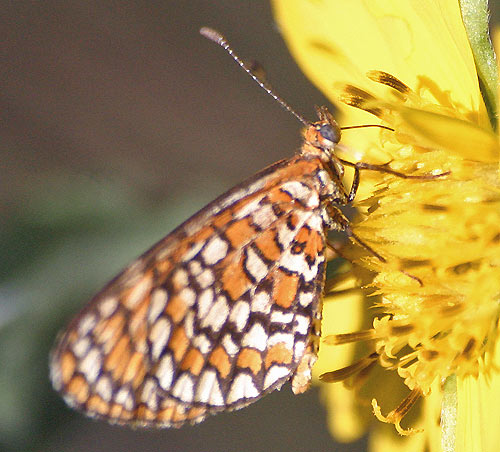
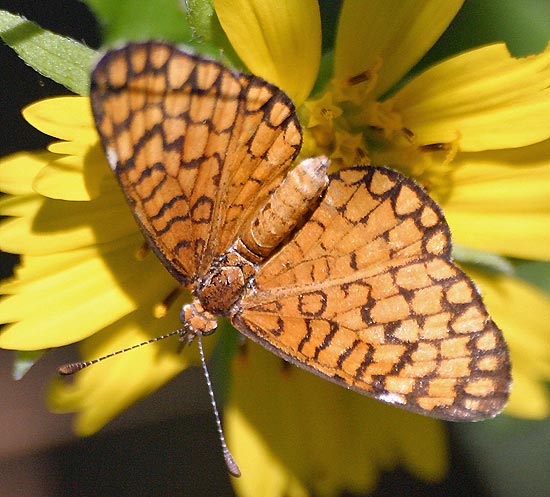
B):
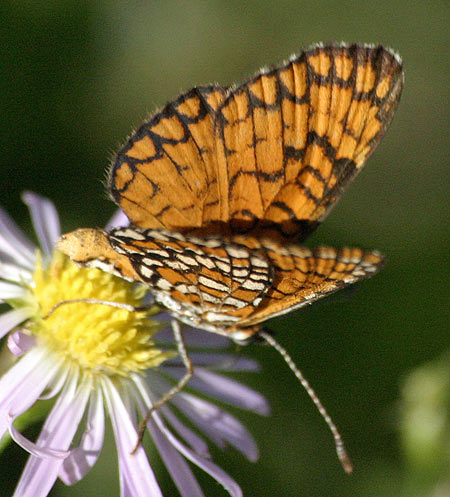
But the other two - found within inches of each other - had thin slivers of orange between the black terminal band and a few of the seven white subterminal spots:
C):
- you can see the marginal orange marks distal from the white subterminal spots 2, 3, and 5, at least (counting from the top of the HW):
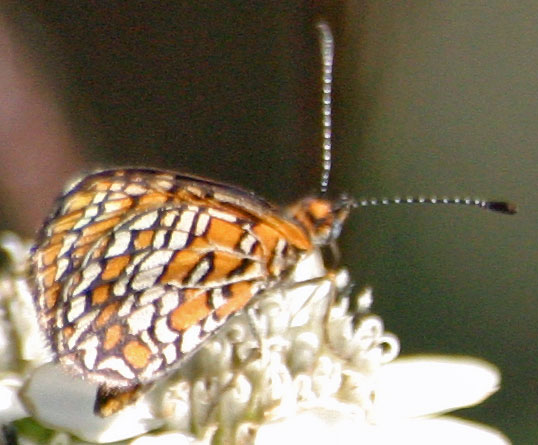
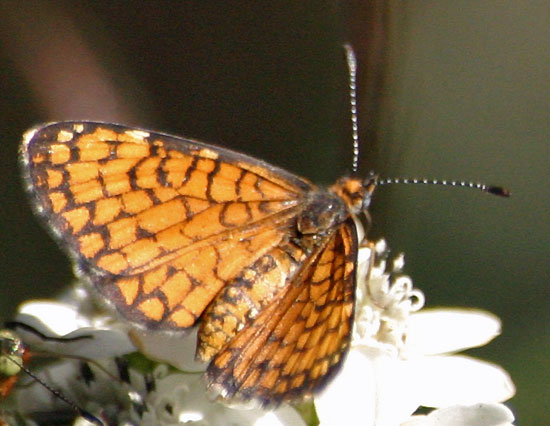
D):
- you can see the marginal orange marks distal from the white subterminal spots 2 and possibly 3 (counting from the top of the HW)
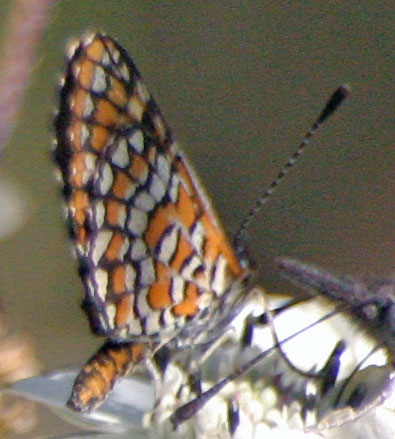
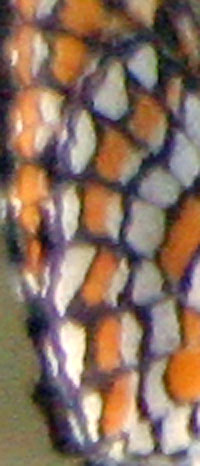
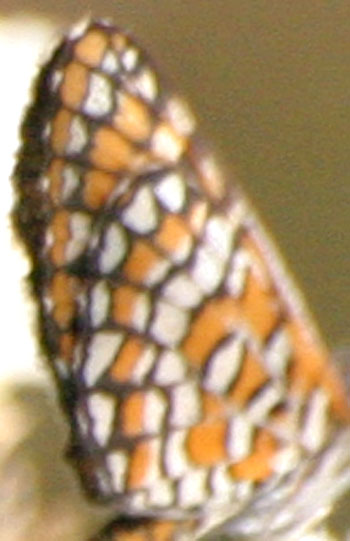
DISCUSSION:
I found one photo on the internet of D. dymas chara from western Mexico with a rather dissimilar pattern of three marginal orange marks - click on this link and scoll down to the fifth photo. Other than this, I cannot find any images of other D. dymas with this feature, and to some degree it contradicts the primary published field identification feature from Elada Checkerspot Texola elada.
I feel that all these above individuals are D. dymas, because of a possibly distinctive difference between elada and dymas on the ventral HW:- look at this photo of an elada taken at the same location and date:
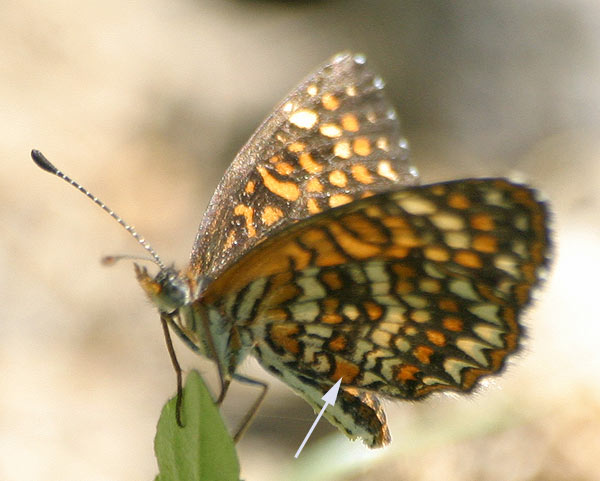
- note the arrow pointing to the area below vein 3A - i.e. the lower margin. Starting at the base of the wing, there is a white band then an orange band, then two white bands and one orange band (this is the one with the arrow head in it), then two white bands.
Now look at the same area on the HW of dymas:
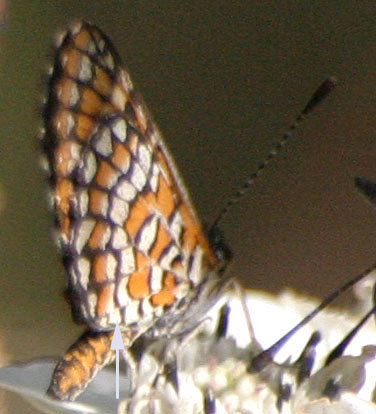
- the lower margin, starting at the wing base, has one white band then one orange band - but then has NO MORE ORANGE BANDS (see arrow); i.e. the last three or four bands are white. Compare this to the elada above, and you should see the difference.
All the reference images of elada and dymas that I can find (about 12 ventrals of each) are consistent with the above feature. My sample is small, so I'd love to hear from anyone with good series of these taxa to see if this feature holds up - thanks.
I am expecting to find that this is a distinction, and that it has already been described elsewhere - if so, I would like to know the reference for the publication.
Anyway, you can see that all four of my proposed dymas - including the two with some orange marginal marks - have the tentative dymas pattern in this area.